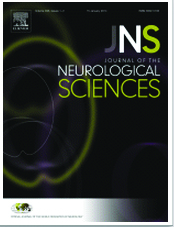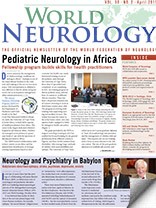By John D. England, MD

John D. England, MD
The Journal of the Neurological Sciences (JNS) is a broad-based journal that publishes articles from a wide spectrum of disciplines, ranging from basic neuroscience to clinical cases. Because JNS is the official journal of the World Federation of Neurology (WFN), the Editorial Board welcomes submissions from around the world. We also strive to publish papers with unique and original observations. In order to satisfy this latter goal, only the best manuscripts are accepted for publication in JNS.
I frequently receive correspondence asking why manuscripts are rejected. The most frequent reason for rejection is that the manuscript does not receive a high enough priority score when the scientific methodology and conclusions are assessed. In view of these criteria for acceptance, my first advice to authors is to design and perform their scientific studies in as rigorous and as thorough a manner as possible. Additionally, original and novel observations are more likely to attain higher scores by reviewers.
As a last but very important point, authors should write the manuscript as clearly and concisely as possible. The English syntax and grammar should be polished and well-edited. When we receive manuscripts that are poorly written, we always send them directly back to the authors for revision prior to more formal review. We cannot publish manuscripts that are poorly written even if the underlying scientific methodology and observations are sound.
 We recognize that English is not the native language of many of our authors, and we will allow re-submission of manuscripts that require editing. My suggestion for authors is to have their manuscripts edited by someone who has excellent command of the English language. If you do not have ready access to such a person, please utilize one of the many excellent “English editing” services. In fact, Elsevier will provide this online service to authors for a modest fee.
We recognize that English is not the native language of many of our authors, and we will allow re-submission of manuscripts that require editing. My suggestion for authors is to have their manuscripts edited by someone who has excellent command of the English language. If you do not have ready access to such a person, please utilize one of the many excellent “English editing” services. In fact, Elsevier will provide this online service to authors for a modest fee.
In our ongoing attempt to enhance accessibility of JNS articles to members of the WFN, we have selected two more “free-access” articles, which are profiled in this issue of World Neurology.
1) Aaron Berkowitz, et al., provide a well-written and richly referenced review on the neurologic manifestations of neglected tropical diseases (NTDs). They focus the review on 17 diseases that the World Health Organization has designated neglected tropical diseases. These diseases disproportionately affect the world’s poorest populations and cause significant morbidity and mortality. In fact, at least 1 billion people around the world are affected by these diseases. Most of these diseases have significant neurologic manifestations. Importantly, these diseases can be controlled using relatively low-cost but strategic plans.
Berkowitz AL, Raibagkar P, Pritt BS, Mateer FJ. Neurologic manifestations of the neglected tropical diseases. J Neurol Sci. 2015;349:20-32.
2.) Edward Mader, et al., provide an interesting and unique case description of a young woman with biopsy-proven tumefactive multiple sclerosis and acute hepatitis C virus 2a/2c who was successfully treated with interferon beta-1a. Although this report is based upon only one case, the observations are potentially very important. The report raises the possibility that a link exists between hepatitis C infection and multiple sclerosis, and it also suggests that interferon beta-1a may be effective treatment for some patients with hepatitis C infection. One particularly reasonable suggestion is that patients with acute CNS demyelination be screened for hepatitis.
Mader EC, Richeh W, Ochoa JM, Sullivan LL, Gutierrez AN, Lovera JF. Tumefactive multiple sclerosis and hepatitis C virus 2a/2c infection: Dual benefit of long-term interferon beta-1a therapy? J Neurol Sci. 2015;349:239-242.
